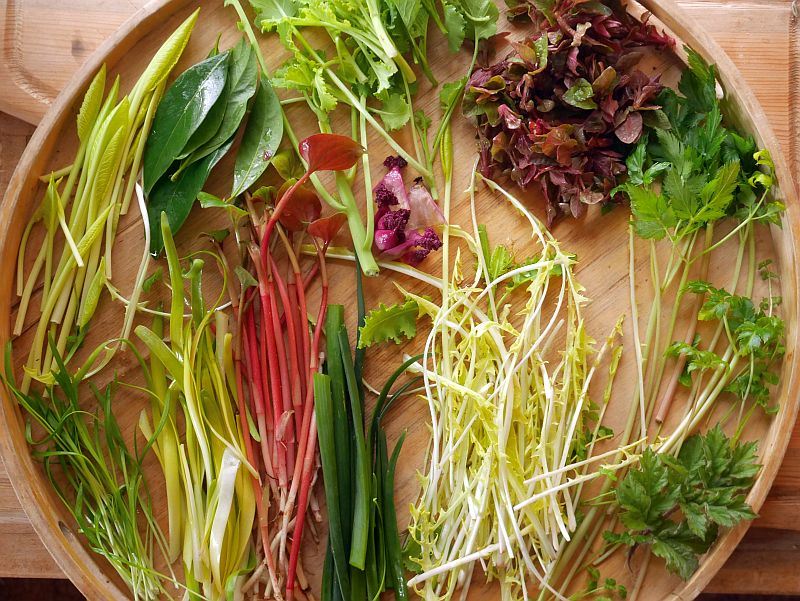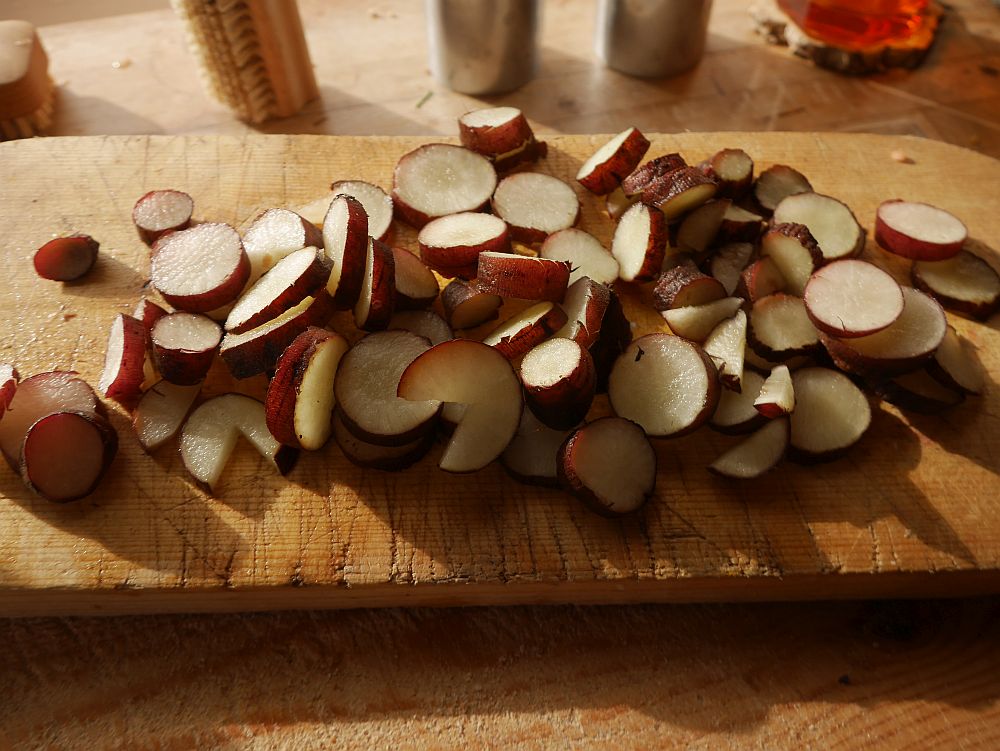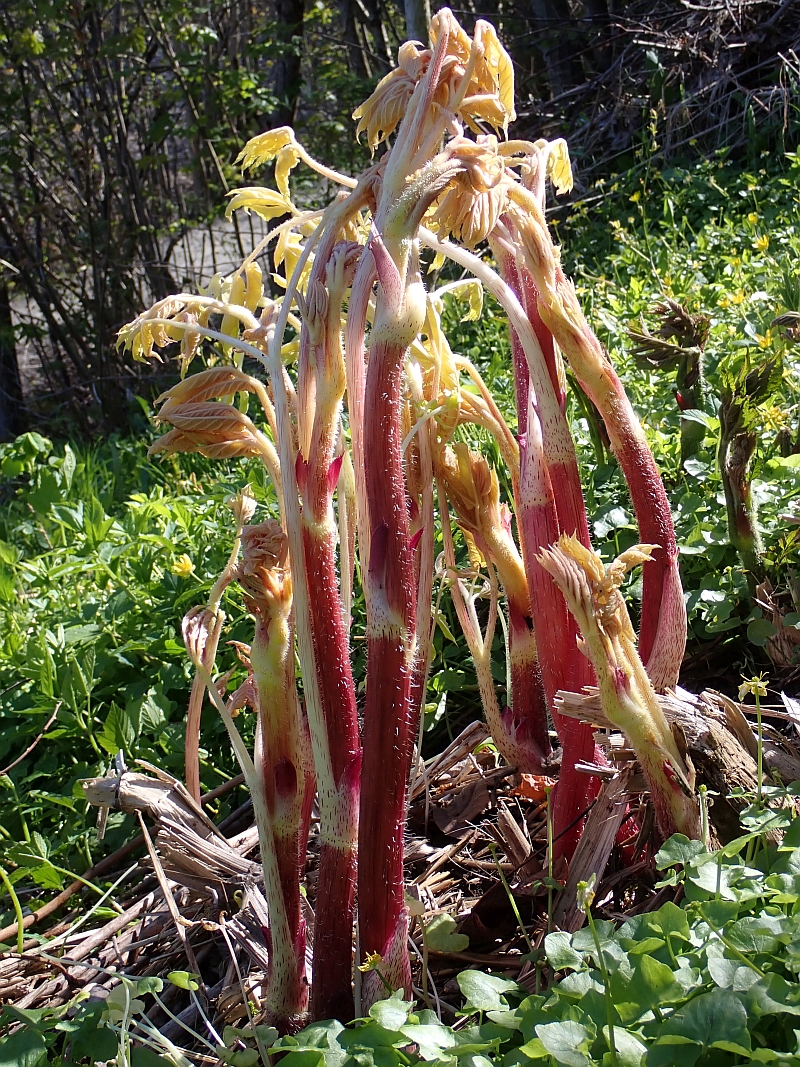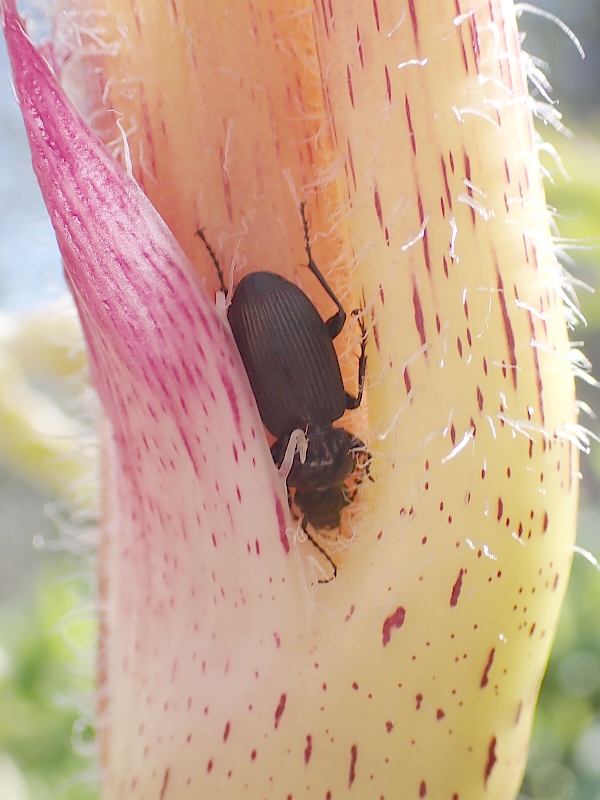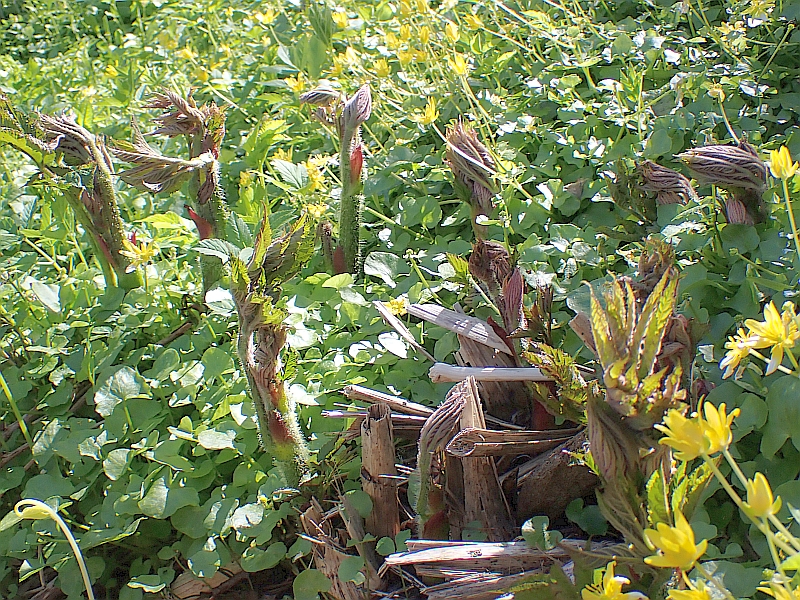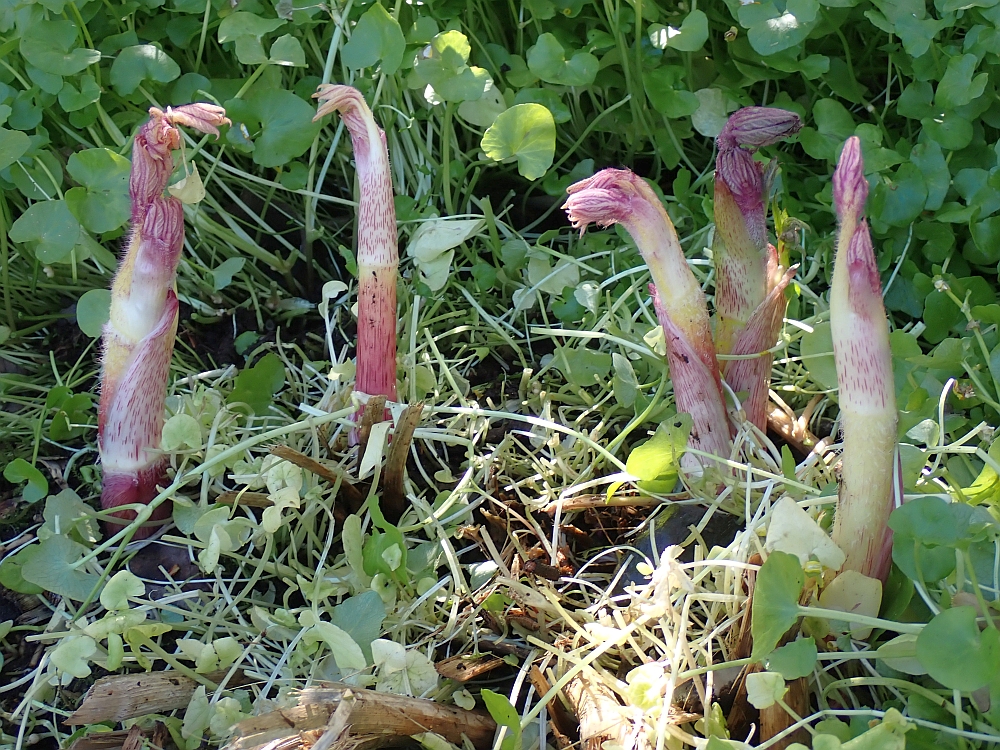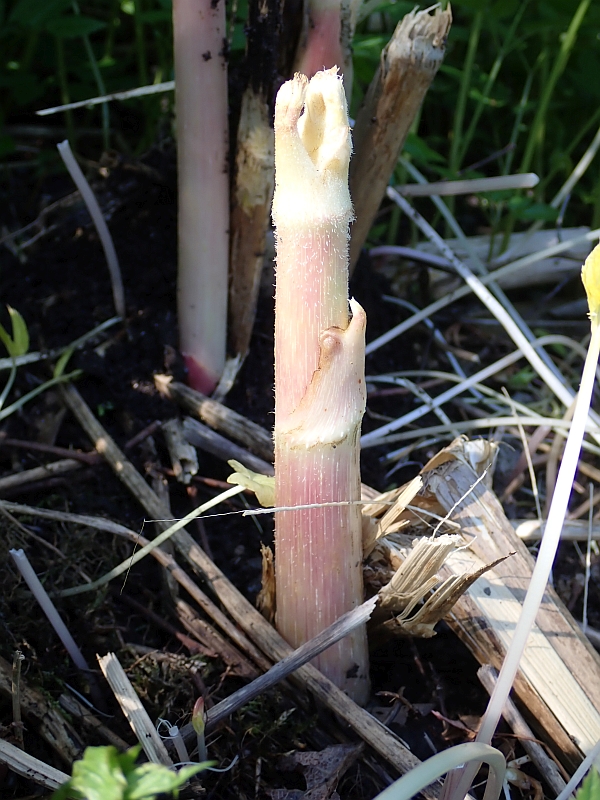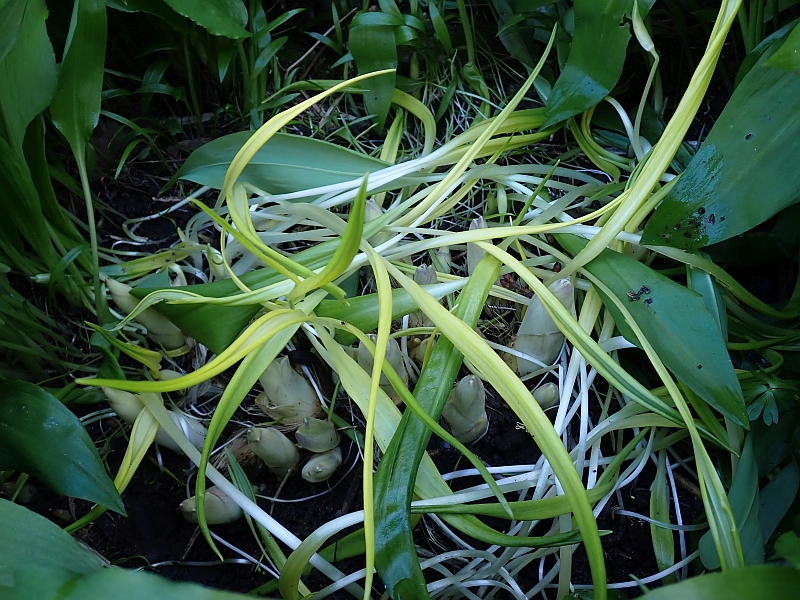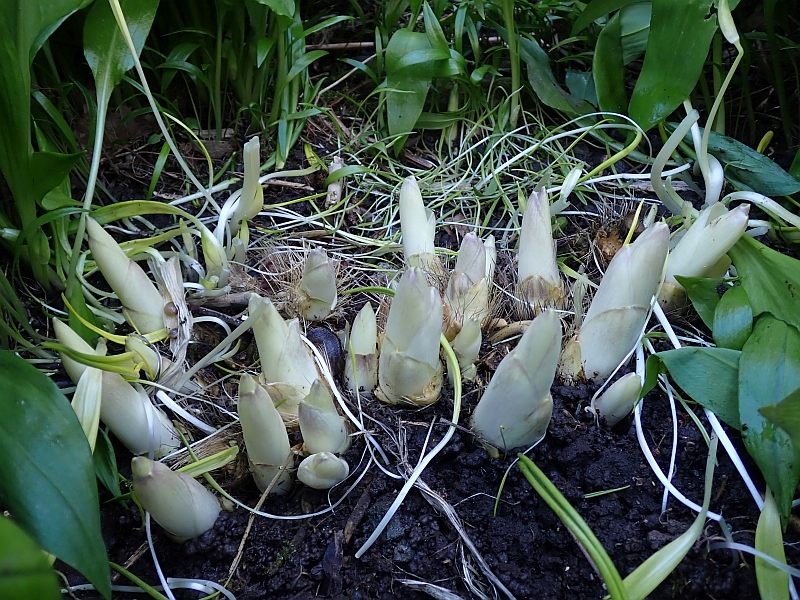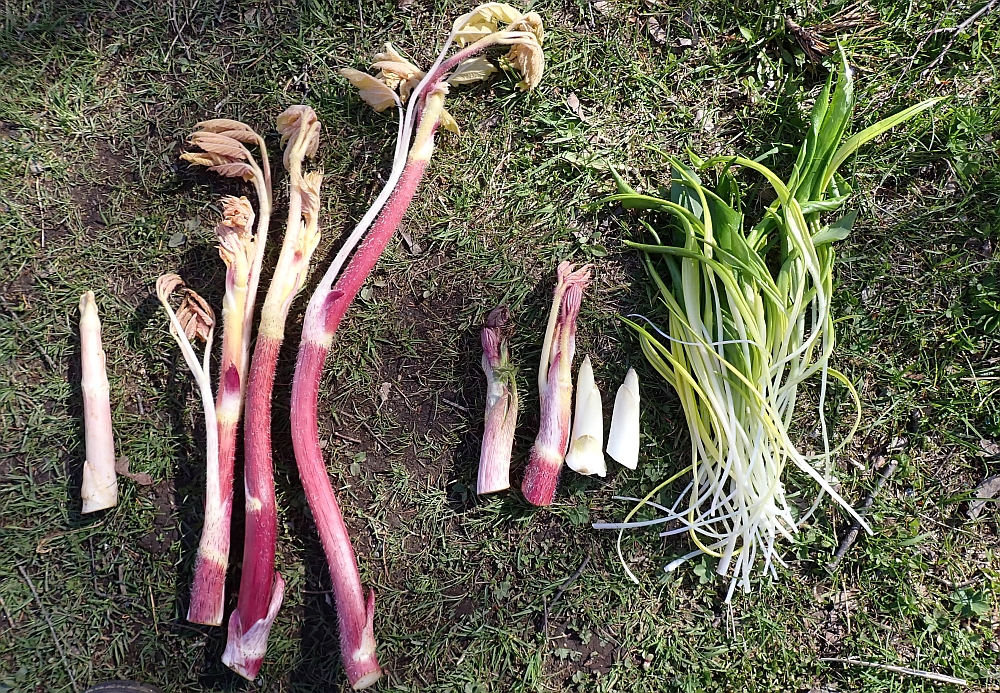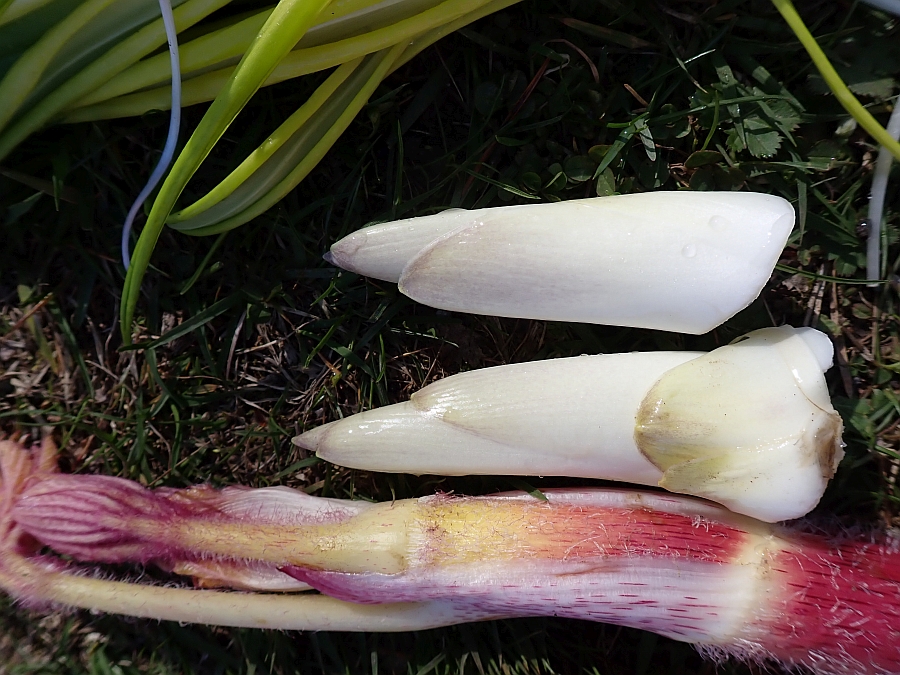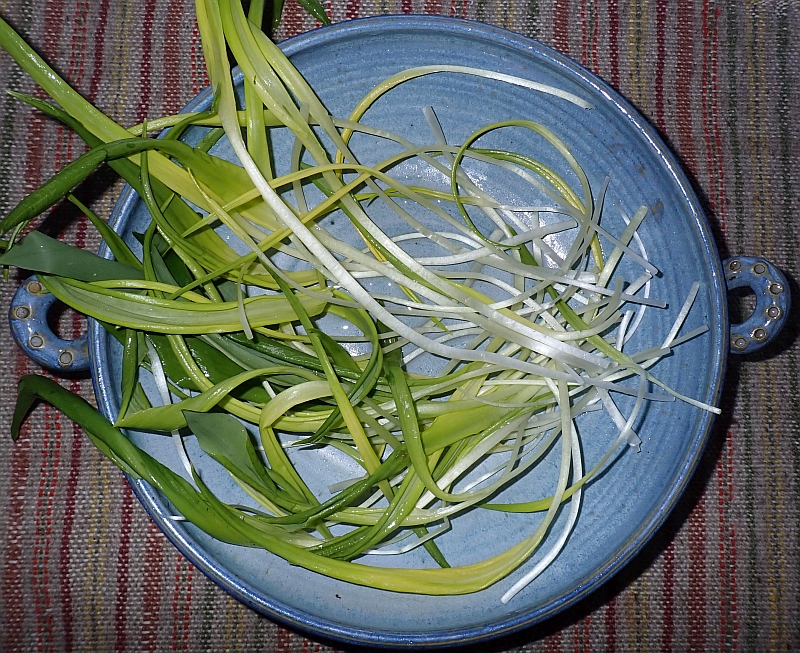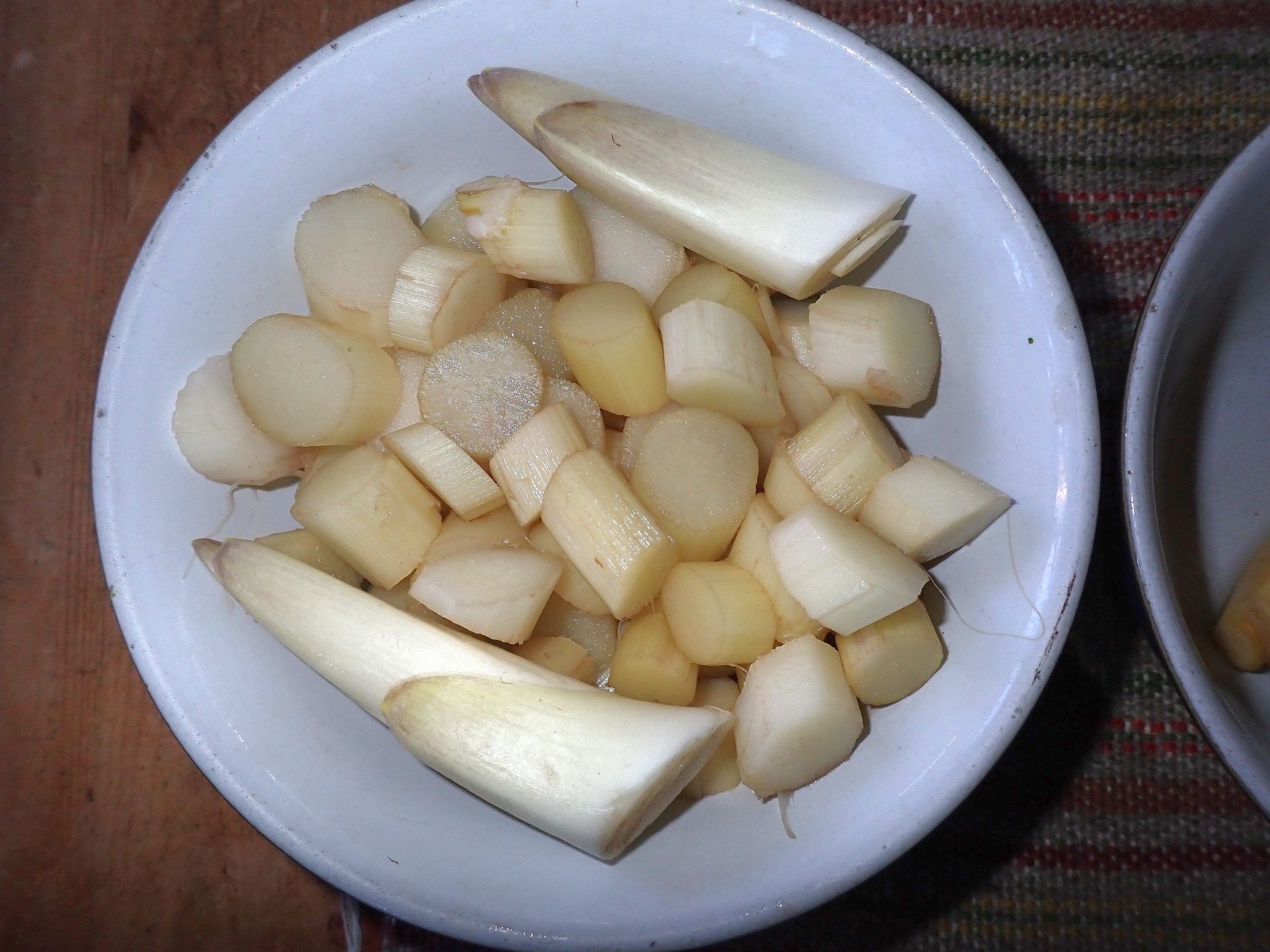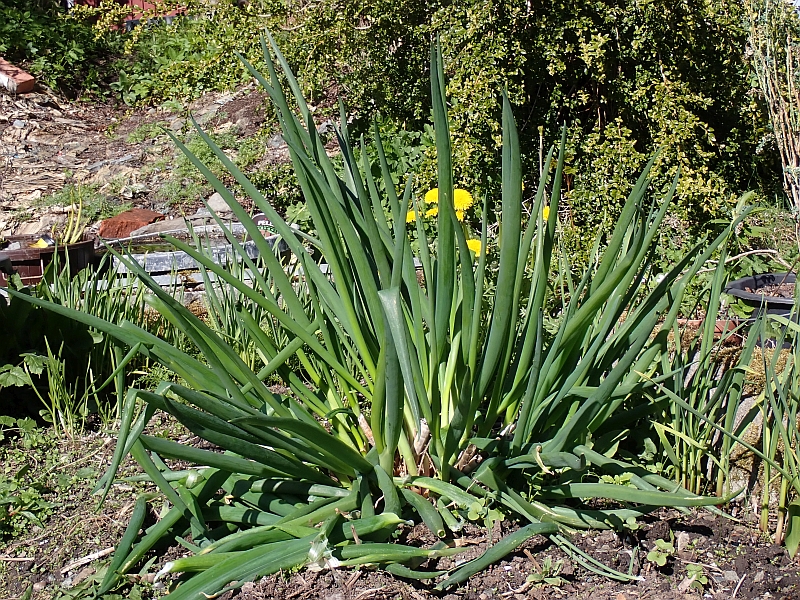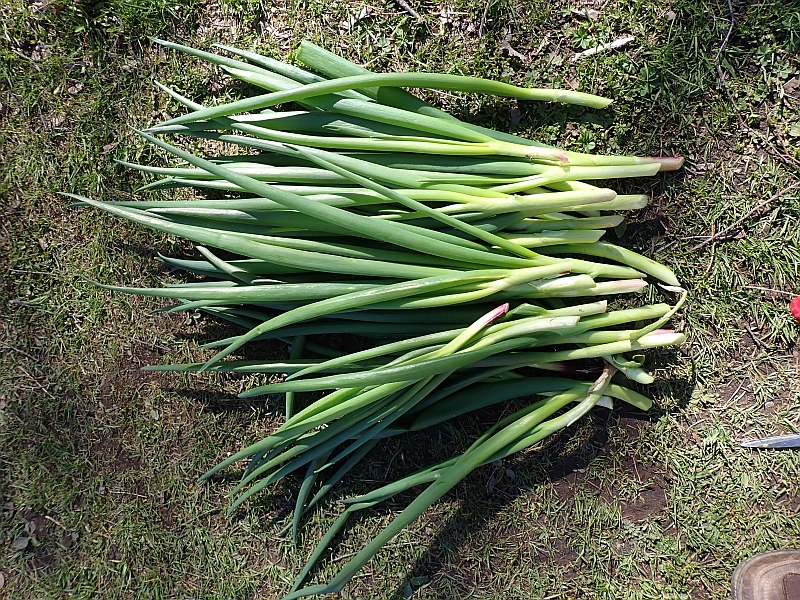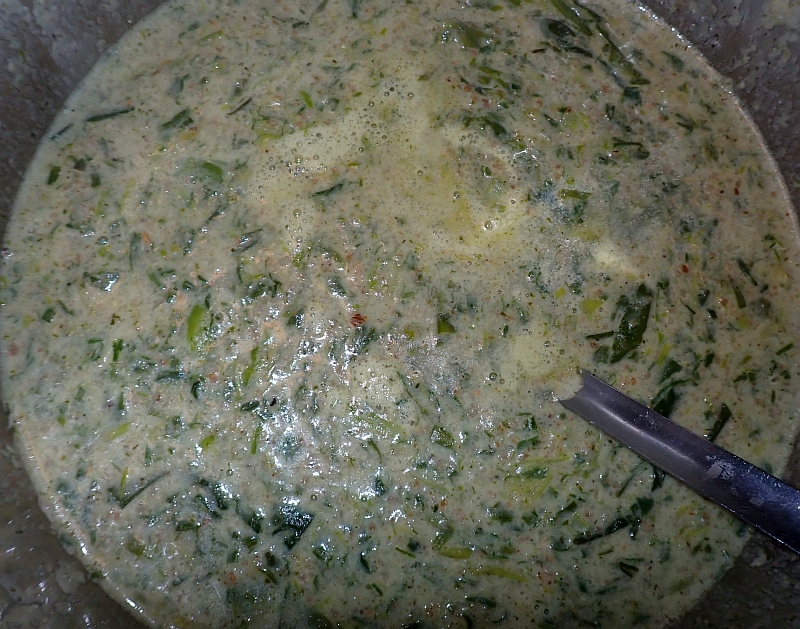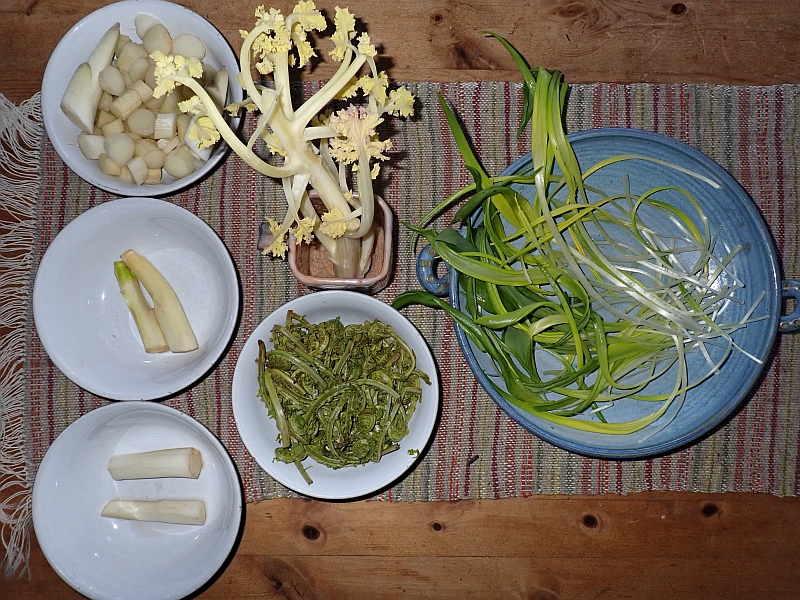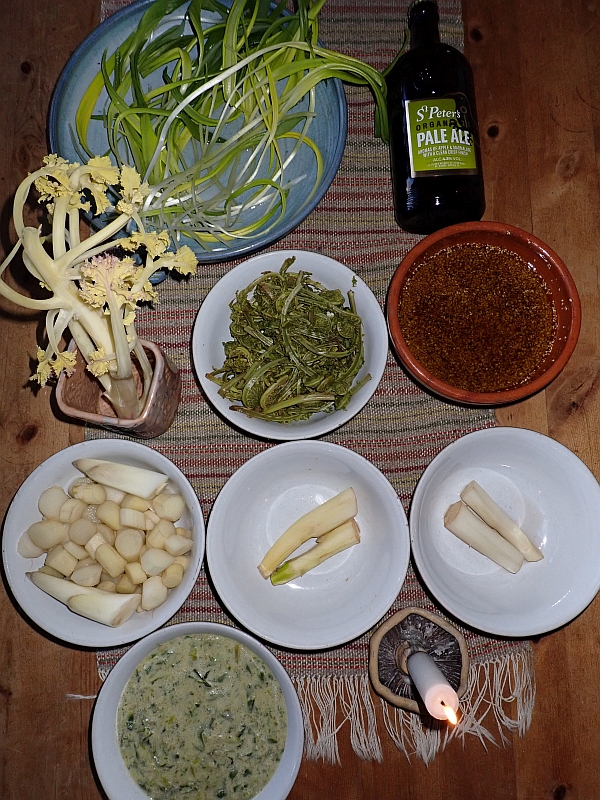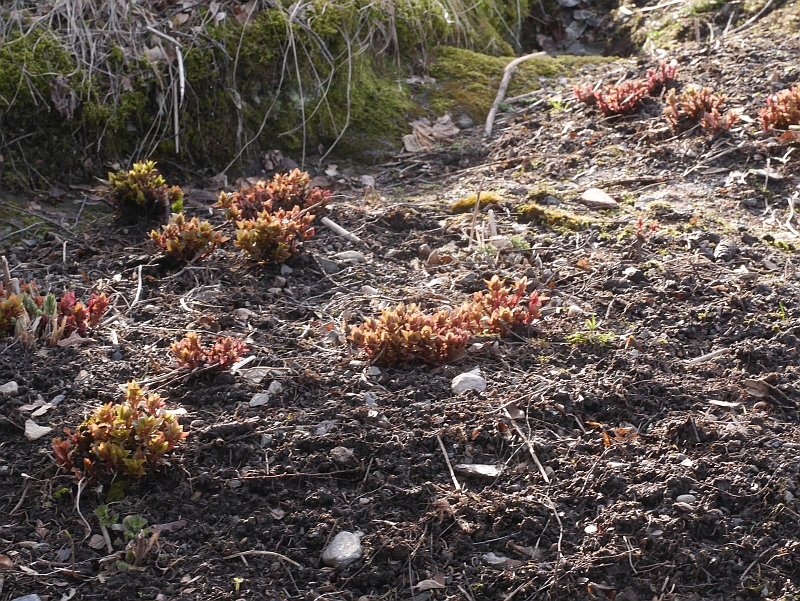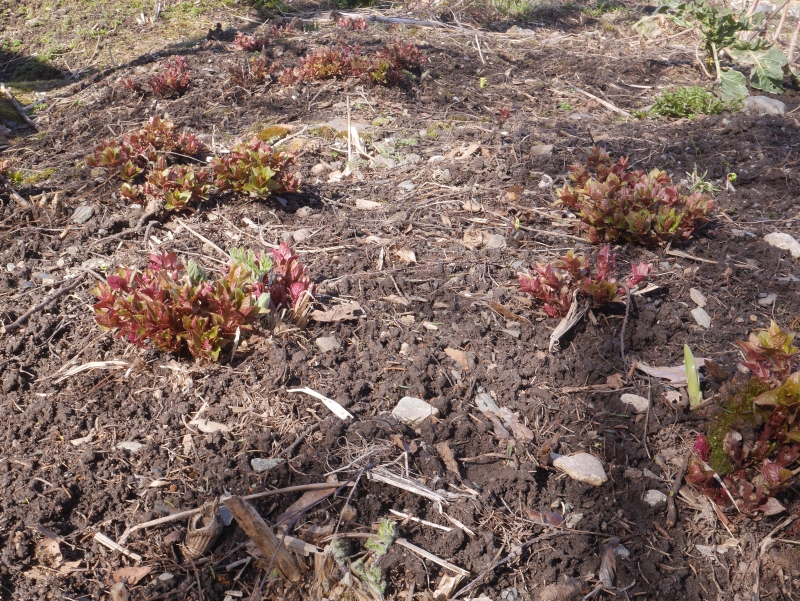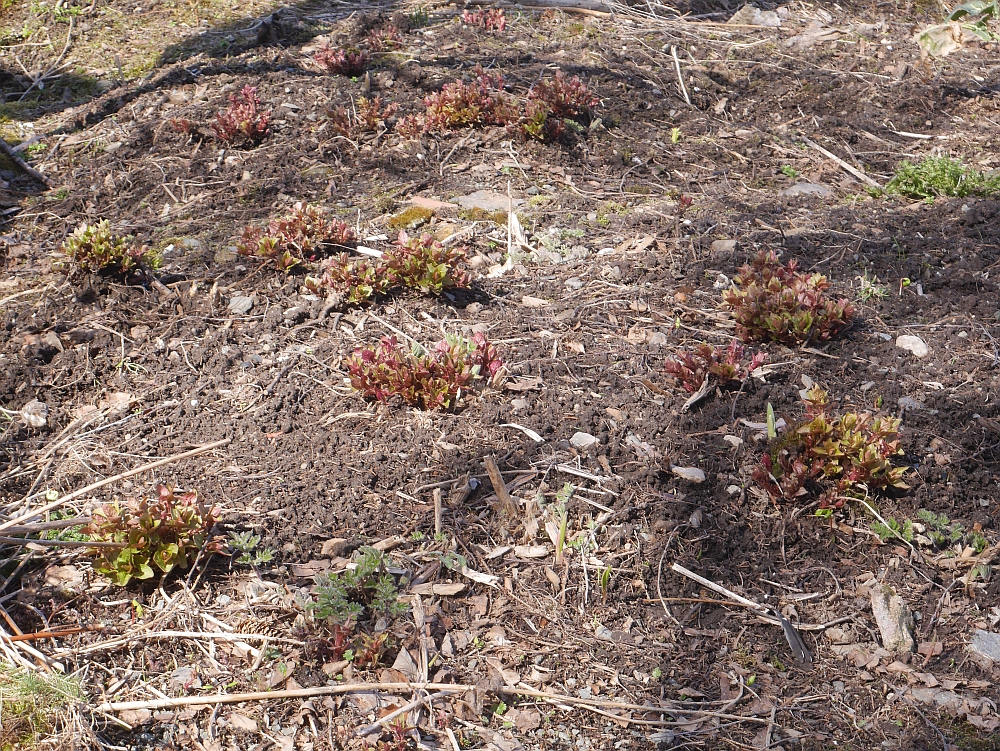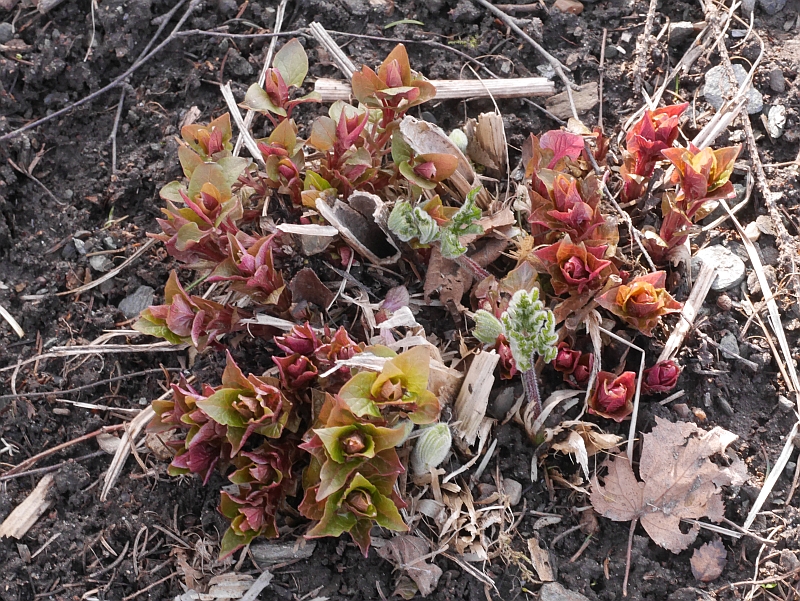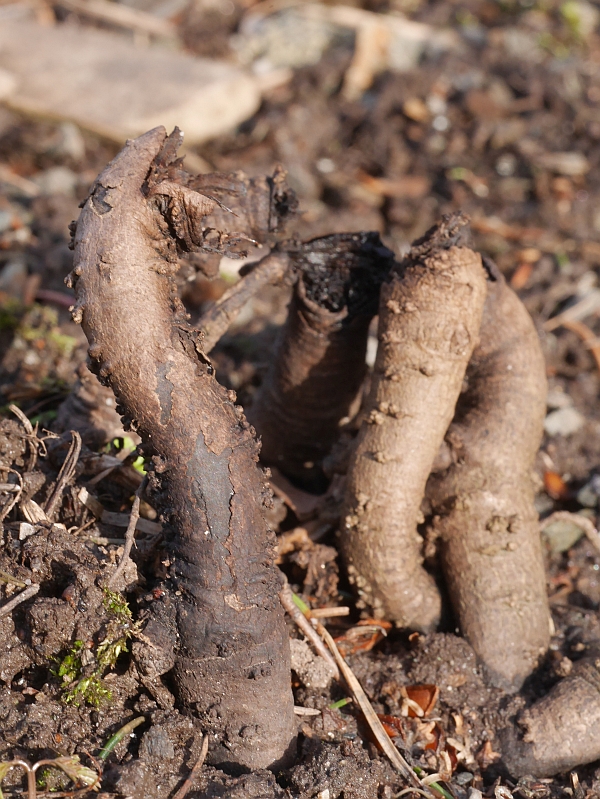Last year’s birthday dinner was the Around the World in 80 Mac-Cheese, this year’s green mac-cheese contained 68 Hablitzia shoots, 68 ramsons (ramsløk) leaves, 68 ground elder (skvallerkål) leaves and 68 stinging nettle (brennesle) shoots, with opium poppy seeds and nutty alpine bistort (harerug) bulbils on top!
The video shows me collecting the Hablitzia shoots!
Category Archives: Perennial vegetable shoots
Hablitzia Pinaattiohukaiset
Yesterday, I was preparing my talk for the Finnish Permaculture Association (see https://youtube.com/live/CYBqioWTr6U) and was reminded that I had mentioned in my book that Hablitzia could be used in place of spinach in Finnish spinach pancakes (pinaattiohukaiset). With my Hablitzia tamnoides (Caucasian spinach; köynnöspinaatit) shoots having grown well recently, I decided to make these Finnish-style habby pancakes for lunch to get in the mood for the talk. I must admit, I didn’t look up a recipe and just improvised (recipes make cooking complicated in my mind!) using ingredients I felt should be in there. Apart from plentiful Hablitzia shoots I mixed in whole grain oat flour, eggs, garlic, chili and pepper and fried them in butter. It was served with a salad which also included Hablitzia! First, the quotation from Around the World in 80 plants (suggested by Jonathan Bates in the US in his article on Hablitzia):
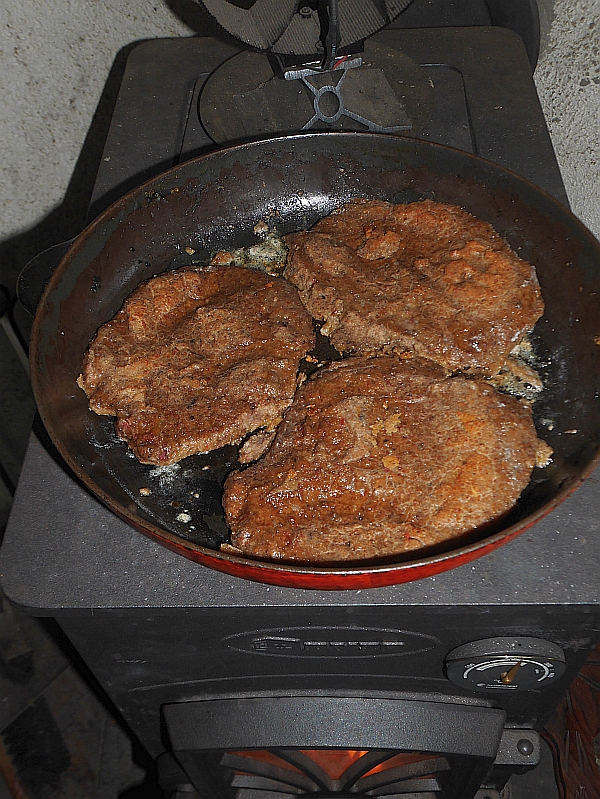

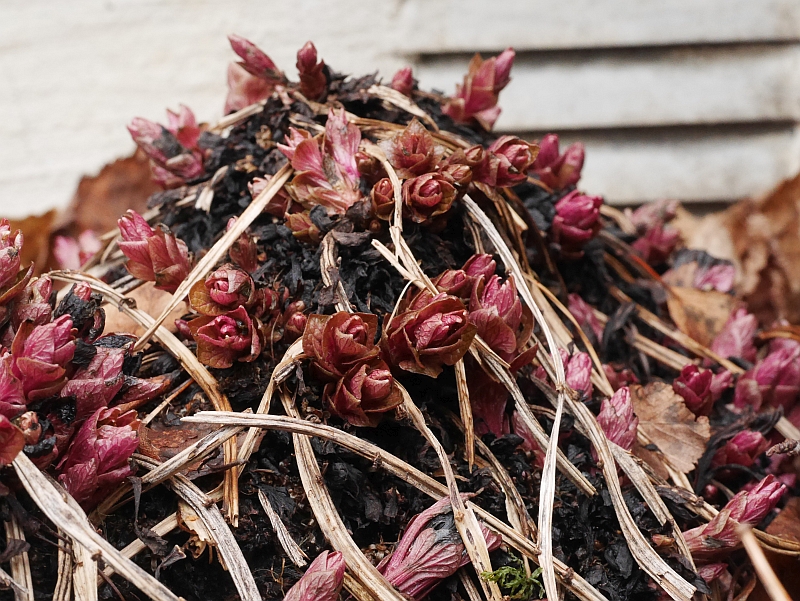

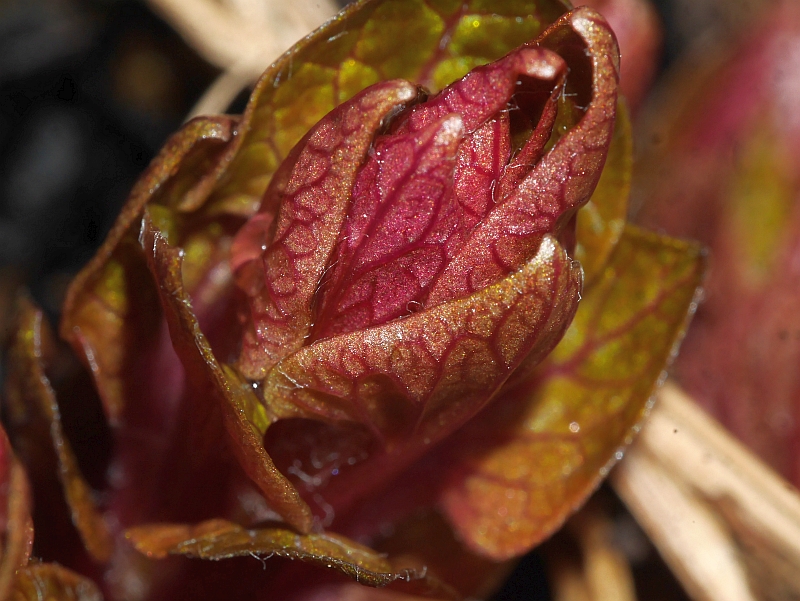


Wietse’s Onion Soup with Udos, Hosta, Ostrich Ferns, Sea Kale and Ramsons
The best of spring in one sitting. In celebration of the country Norway, we yesterday (17th May) harvested a small selection of the best blanched perennial vegetables (apart from the ostrich fern which had to be harvested or it would have been too late). This included three udo species (Aralia cordata, Aralia californica and Aralia racemosa), sea kale (Crambe maritima), Hosta “Big Daddy” together with delicious sweet blanched ramsons (Allium ursinum) . They were all eaten raw (apart from the fern which was steamed for 10 minutes) with a Japanese dipping sauce – olive oil (should have been sesame), tamari (soy sauce) and roasted sesame seeds. These accompanied an onion soup prepared with half of the leaves from one plant of Wietses Onion, a vigorous hybrid of Allium pskemense and Allium fistulosum!
It doesn’t get much better than this! More information with the pictures:
Spring wouldn’t be spring without Hablitzia
I’m in Habby Blitz (bliss) once again and Hablitzia tamnoides (Caucasian spinach / Stjernemelde / Nordens spinat) is the most important vegetable once again. With some 30 plants (and increasing) there¨’s more than enough to harvest. Here’s a few pictures from an area on very shallow soil (10-20cm) under the shade of a large birch tree where it thrives. And it’s now 20 years since I planted my first!
Record warmth and record early shoots
With record temperatures recorded in this area at the moment after a mild winter when all the cold spells coincided with good snow cover means that the soil was hardly frozen all winter and garlic shoots had appeared a few days ago at least two weeks earlier than I’ve recorded before and I also found the first ground elder (skvallerkål) shoots – welcome back my friend and, be warned, I will be eating you until the autumn!
It’s the marbled purple stripe garlic varieties that I grow that appear first: Aleksandra, Estonian Red, German Hardneck and Valdres!
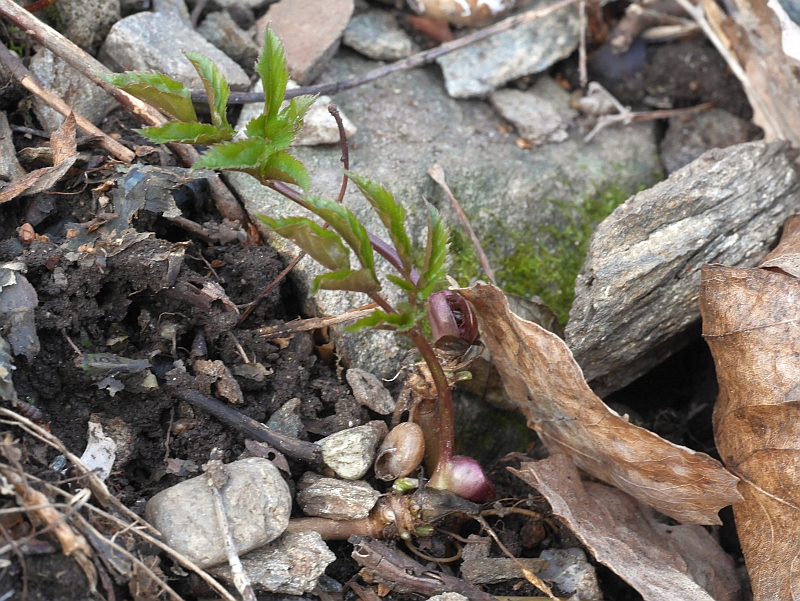
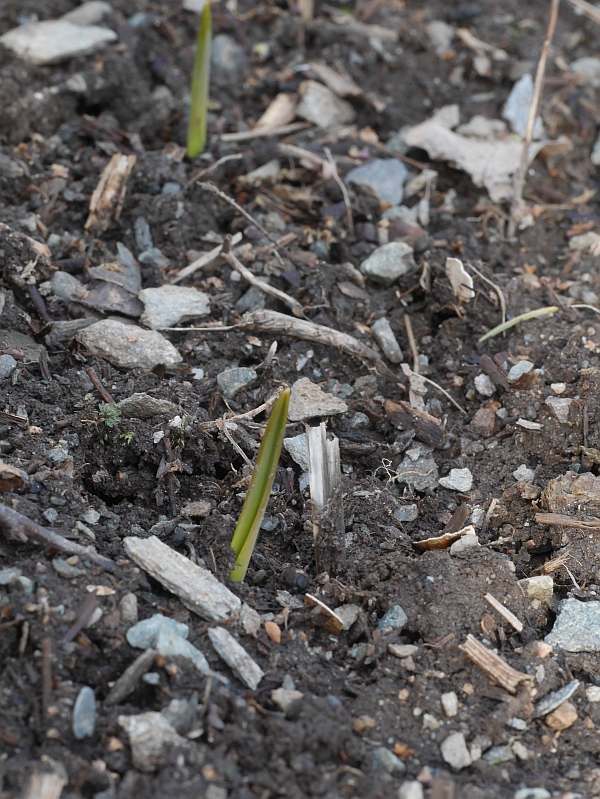
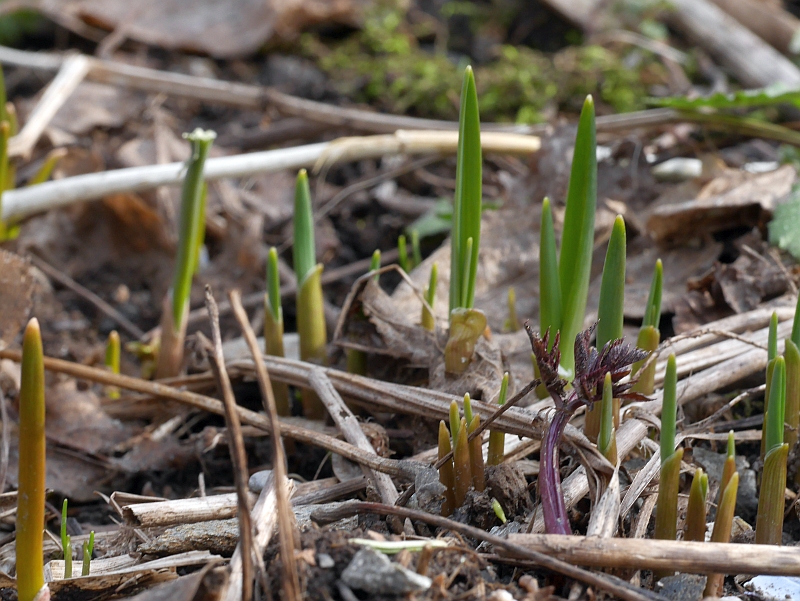
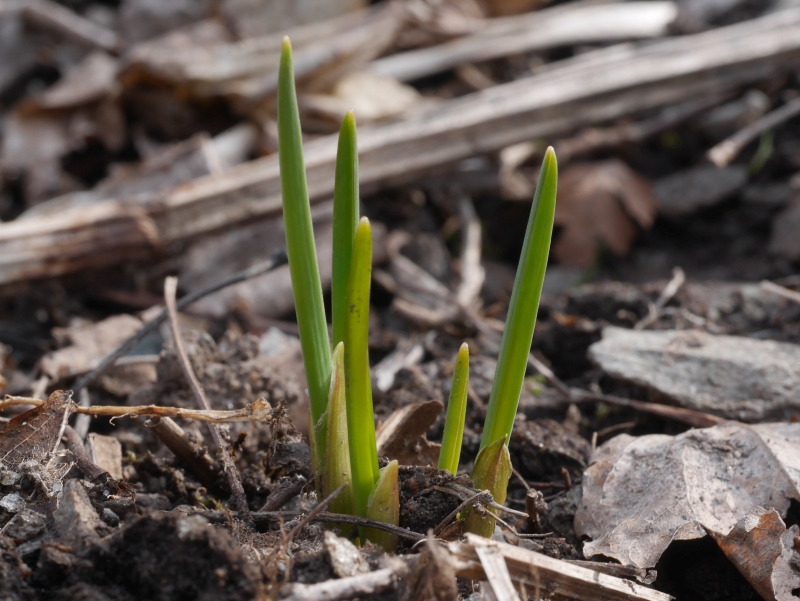
Habby pizza time with Urui shoots
We are now rapidly approaching maximum Habby (Hablitzia tamnoides) harvest, so most meals now have masses of shoots of this amazing perennial vegetable. We make sourdough bread every two or three weeks (it stores well) and usually make pizza with some of the same dough. 100% whole grain with zero refined flour of course. Yesterday, I collected a large bowl of Hablitzia shoots and also used Allium scorodoprasum and a few dandelion leaves for the year’s first Habbizza!
 The pizza was served with delicious raw urui (Hosta sieboldiana) with a roasted sesame seed / soya sauce dipping sauce:
The pizza was served with delicious raw urui (Hosta sieboldiana) with a roasted sesame seed / soya sauce dipping sauce: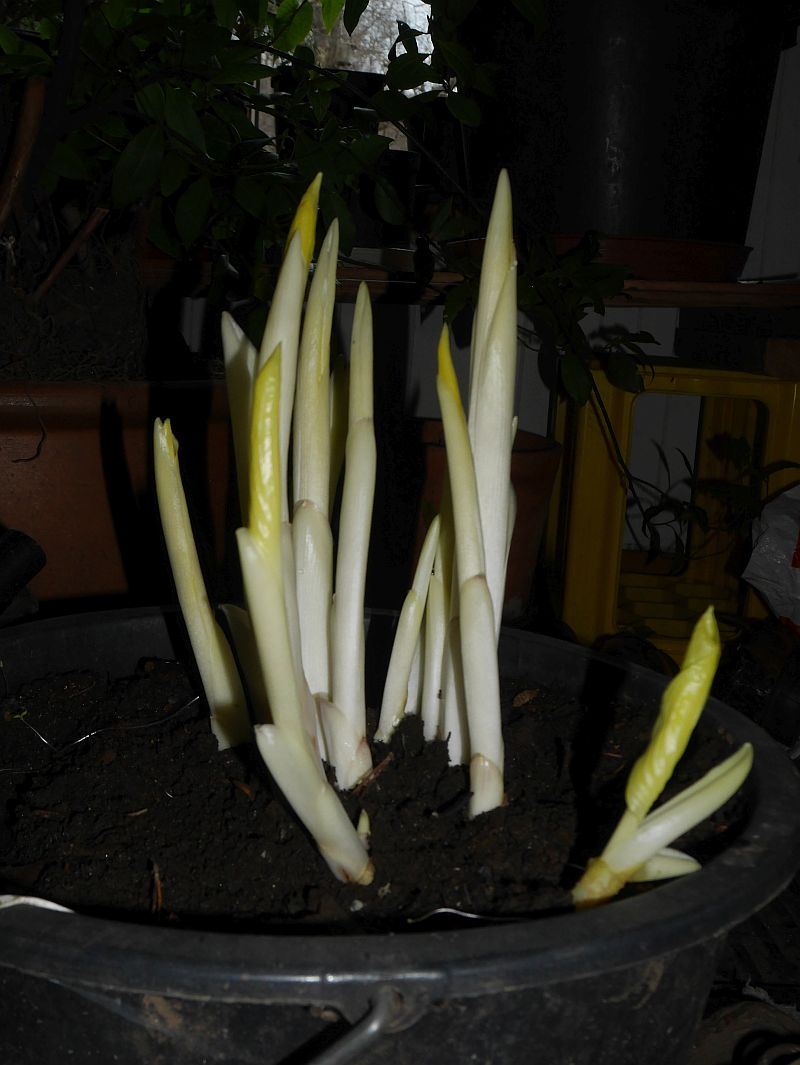

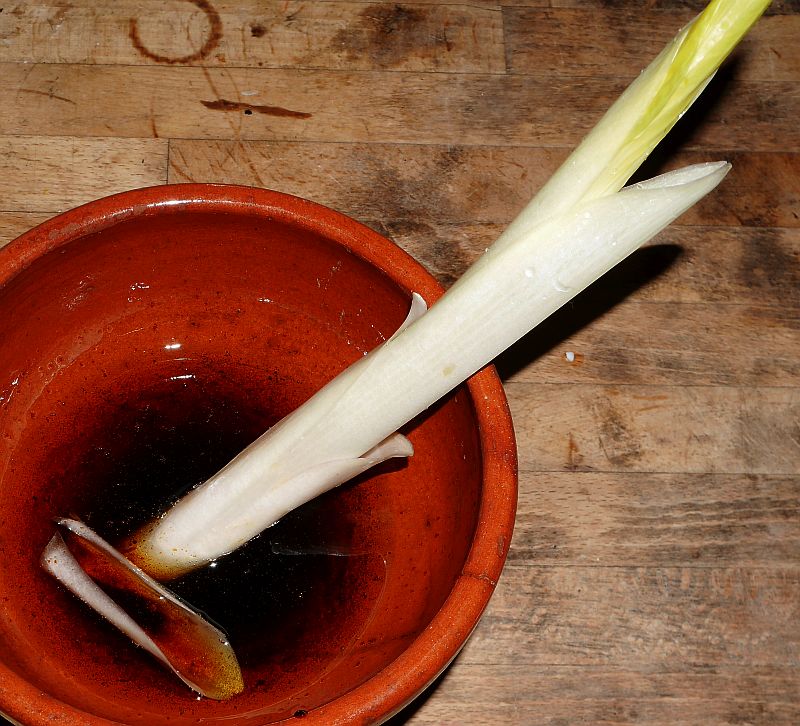
First Garden Forage of 2021
Most of the greens are now finished in the cellar, so time for the first harvest in the garden despite for the fact that it’s been snowing off and on over the last week and air temperatures haven’t risen much over +5C so far this year: 30 different greens plus two varieties of oca made into a diversity green pasta sauce! SO GOOD! Lucky us being able to harvest the best nutrition straight from the garden with little effort. Perennials are best! As usual, the Giant Ulleung Celery (Dystaenia takesimana) has come on furthest of my perennial vegetables! See the list of species used below the pictures.
Species used:
Allium senescens
Allium x proliferum (shoots)
Hablitzia tamnoides
Primula elatior
Allium ursinum
Allium oleraceum
Allium cernuum
Allium nutans
Allium sativum (shoots)
Dystaenia takesimana
Mertensia ciliata
Tragopogon pratensis
Rumex acetosa
Aegopodium podograria
Urtica dioica
Allium paradoxum
Allium victorialis
Barbarea vulgaris
Allium x cornutum
Allium douglasii
Brassica oleracea (perennial kales)*2
Rumex patientia
Allium pskemense
Heracleum sibiricum
Hemerocallis dumortieri
Arabis alpina
Ficaria verna
Angelica archangelica “Vossakvann”
Allium cernuum
Laurus nobilis (inside)
Japanese Sansai in March
Almost exactly 5 years ago this week I was on a study tour to Japan to look at Sansai production. I’m doing a webinar talk about the trip for Norwegian Seed Savers (KVANN) on 18th April. Although it’s open for all it will be in Norwegian. If there is interest for it I could repeat in English at some stage, but probably not before next winter. If anyone would like to organise it, please let me know. Otherwise, I may just organise it as the first Edimentals talk! See https://www.facebook.com/events/1333421547030675
Sansai (meaning mountain vegetables, mostly perennials) are what are essentially previously wild foraged vegetables which are now produced on farms in the lowlands around the cities in Japan, often in greenhouses for all year production – roots are often frozen until they are needed).
With a little planning one can extend the season for some of the best sansai vegetables by digging up roots in the autumn and planting them in soil in buckets which are stored in my cold cellar (just above 0C this winter), and ready to be brought up into the living room for forcing in winter / spring (they could also be left outside, protected by piling leaves or similar around them – the roots are more exposed to cold in a bucket). For blanching I use a second upturned bucket on top. I’ve now harvested three important sansai veggies which were forced (it took a couple of weeks);
Udo (Aralia cordata): peeled and sliced and eaten as a salad in a sesame oil and soy sauce with roasted sesame seed dressing
Ostrich Fern (Matteuccia struthiopteris): steamed for 10 minutes
Urui (Hosta sieboldiana): The blanched shoots are deliciously crispy and mild tasting, perfect with a dipping sauce (sesame oil, roasted sesame seeds and soy sauce)
The sansai were served with fried veggie beetroot burgers (aka blood burgers) which are cooked and grated beetroot mixed with egg and wholegrain emmer flour (with grated onion, garlic, chili, salt and pepper).
Garden produce 6th April 2020
Continuing my series of photographing my veggies, all from the garden this time. Just three this time, added to a pea soup.
Allium nutans (or hybrid) (Siberian nodding onion)
Hablitzia tamnoides (Caucasian spinach, stjernemelde)
Rumex patientia (patience dock, hagesyre)
An alternative spring harvest
Somebody asked me the other day if I use floating mulch (fiberduk / agryl) to be able to harvest all these greens so early. No, no and again no….this is one of the biggest benefits of perennial vegetables….it is totally natural, no microplastics are released into the environment, no oil is needed to plough the fields, significantly less migrant labour is needed and little or no fertiliser and water is needed, it is almost totally free once established and can yield year after year! So, whilst large areas of farmland in the northern hemisphere are being covered by plastic mulches to bring on annual crops for the market earlier, I’d just like to point out that there’s an alternative better way!
So, here are the plants that I harvested for yesterday’s delicious green pasta sauce:
Armoracia rusticana shoots (horseradish / pepperrot)
Myrrhis odorata (sweet cicely / spansk kjørvel)
Houttuynia cordata “Chinese Market” (shoots and rhizomes from the cellar; this cultivar is significantly larger than other Houttuynia I’ve grown) (Fish herb, Himalayan water creeper)
Allium senescens x nutans (hybrid Siberian onions)
Laurus nobilis (bay / laurbær)
Brassica oleracea (perennial kales)
Crambe maritima (sea kale / strandkål)
Taraxacum officinale (dandelion / løvetann)
Allium x proliferum (walking onion / luftløk)
Hablitzia tamnoides (Caucasian spinach / stjernemelde)
Dystaenia takesimana (giant Ulleung celery, seombadi)
Oenanthe javanica (seri)
Polymnia edulis (yacon) (second picture)
plus garlic and chili
